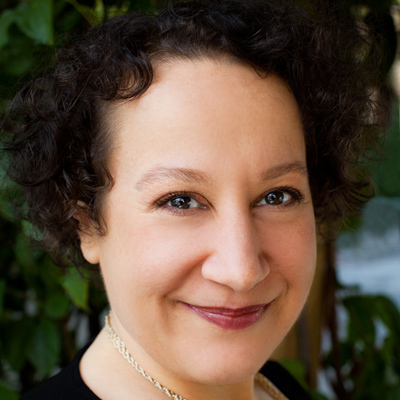It’s always fun to find out what others think about what you do.
In regards to conversion optimization, we’re of the belief that UX is a big part of our process and that great UX leads to more conversions. But how do UX people view conversion optimization? What do they think it is, and how do they think it fits into the organizational context with UX?
To find out, I talked to a few dozen UX practitioners. I learned that their perceptions of conversion optimization were close, but not always aligned, with how we believe it to be.
Table of contents
What Do UX People Think Conversion Optimization Is?
First off, at a high level, how do UX professionals define conversion optimization? How do they understand the scope of what conversion optimization people do?
According to Jeff Gothelf, author of Lean UX, conversion optimization is about “finding the right mix of value proposition, call to action and price point to convince a customer to take a deeper level of engagement with your product or service.”
Others had similar definitions. Conversion optimization is, of course, much broader than that. But it’s interesting to hear how people understand it. For example, here’s how Suzan Olson, Principal at MDH Human Factors, put it:

Suzan Olson:
“Conversion optimization uses the scientific method to turn visitors into customers. Effective CO strategies turn passive browsing from existing website traffic into an interactive personal experience with more leads, sales and profits.”
I like the inclusion of the scientific approach to website optimization. It’s an important point because it deemphasizes the idea that conversion optimization is just about ‘testing random things’ or short term gains.
James Gurd, Owner of Digital Juggler, described it a structured approach to improving business metrics, both micro and macro actions:

James Gurd:
”It is a structured approach to improving the progress through and completion of user journeys, whatever the end goal may be. A conversion can be financial based (e.g. Complete an order) or soft targets (e.g. Newsletter sign-up). It can even be event-based e.g. How many people who read our blogs share the link socially?
In terms of the broader context, macro conversions should be aligned to business goals. The digital channel should be supporting the business vision, so if part of the business strategy is to increase advocacy, then there should be conversions related to this outcome e.g. NPS survey completion, social sharing, recommend a friend.
Micro conversions typically would be what the digital team drive within the macro context. This is where the tactical optimisation plans come into play, working towards achieving macro goals. For example a macro conversion goal of increased basket adds could have a wide range of micro conversions including increased click through from list to product page.”
Structured approach: totally. I found that, for the most part, even if UX professionals weren’t intimately familiar with conversion optimization, they had a pretty accurate idea of what it entailed. Most believed it to be an emphasis on improving business metrics through a structured optimization process.
How Does Conversion Optimization Fit Into The Organization?
Next, I wanted to know how UX professionals believed conversion optimization fit into the broader organizational context. How do CRO teams work with others, including SEO, branding, IT, product, and of course UX?
What’s the Difference Between UX and CRO?
To start, it’s helpful to clearly delineate the perceived goals of both conversion optimization and UX. How do the two differ in their execution?
According to Suzan Olson, an effective conversion optimization strategy is crucial, and UX applies many of the same principles as conversion optimization. In fact, they both use testing and research to uncover opportunity areas and validate designs:

Suzan Olson:
“UX applies many principles of learning, perception, cognition, behavior, and motivation to decision-making.
Conversion optimization also applies these psychological principles, but also incorporates persuasive marketing that aims to manage user’s experiences and increase their desire to make a purchasing decision.
Both UX and conversion optimization utilize the scientific method and require iterative testing, though with UX, iterative testing occurs early in design where with conversion optimization it occurs after initial deployment.”
An interesting Quora answer from Braden Hoeppner on the differences between the two practitioners:

Braden Hoeppner:
“A UX designer is the person typically responsible for constructing the interaction or visual representation of a user experience project. They take feedback from user research and interpret it into a solution for the business and the users. UX designers will come from a very wide variety of backgrounds and I suspect are often using any one of a variety of wireframe, prototype or design software to deliver their output.
A “Conversion optimization consultant” is usually someone who a business contracts for a short period of time to evaluate a particular workflow. They typically come from a web analytics background and will more often than not propose a series of tests to run to improve the conversion of a flow. They will likely work with a UX designer to execute these tests. Tools that they may use would be: web analytics, AB / MVT testing tools, design software and PPT.”
Pretty on-point, though that eliminates all of the people who work in-house on continuous optimization projects. As Per Axbom, UX Designer and founder of Axbom Innovation AB, said about conversion optimization, “it is part of the development process and ongoing maintenance of a digital solution, and as such is the responsibility of a product manager although it may be carried out by someone else.”
Another response I heard was that ‘conversion optimization is a subset of UX.’ This one from Per Axbom as well:

Per Axbom:
“I myself see conversion optimization as a subset of actionable UX.
The concept of user experience is very broad, stretching all the way from research and strategy to prototypes and copywriting.
The common denominator in all UX work is a starting point in data and insights about user behavior. I see conversion optimization happening first as a skill applied when setting performance indicators, second as part of the design decisions that drive development, and third as part of ongoing maintenance tasks. For me it’s not so much about UX and conversion optimization complementing each other, as it is about the necessity of a product manager to understand when and where the optimization must happen.”
I guess it makes sense under that definition, but I always saw UX as a part of conversion optimization. Notably because many people in conversion optimization come from a UX background (or an analytics one), I thought it was a foundational skillset of an optimizer. Something that looks like this, maybe:

Though, to be fair, I also thought that because of the emphasis on experimentation and data, that UX was more theory-based.
Of course there’s the rigorous and fairly quantitative field of usability research, but I felt that conversion optimization encompassed much of that as well (there’s that overlapping area in the diagram for that stuff). And of course, there’s a certain level of heuristic-based implementation in conversion optimization, too, especially early in a program and without a lot of traffic.

Feel free to debate in the comments about that view.
How Do UX and CRO Complement Each Other?
While the two are distinct fields, UX and conversion optimization in many ways overlap and in many ways complement each other.
Suzan Olson says that both fields seek to reduce uncertainty in decision making, and thereby increase revenue and reliability:

Suzan Olson:
“High performing organizations use data to drive high-stakes strategies thereby reducing uncertainty, error, and variation while increasing certainty, reliability, and profits.
Conversion optimization requires controlled testing. All the observations, analytics, and anecdotes you can gather may improve results, but it is only through testing that you confirm or disaffirm your hypotheses.
Usability testing is valuable in exploring a variety of scenarios quickly, gaining immediate feedback, and developing hypothesis that could not otherwise have been predicted.”
Her last point there was something I heard a lot: that usability research can be used to inform better hypotheses. There’s a reason it’s one of the prongs of our ResearchXL model, after all.
James Gurd from Digital Juggler put it really well:

James Gurd:
“To do CRO you need insight to create hypotheses for testing.
A test without a hypothesis to prove/disprove has no focus. UX can help in terms of understanding why something might be happening e.g. Why aren’t people adding to the basket on mobile.
A structured UX approach would use customer centric thinking to look at how users interact with the website, what works and where issues lie. They would then apply this, in the context of good practice, into concepts for improvement based on identified user needs. So UX thinking can improve the structure, focus and relevance of CRO projects.”
Finally, as we’ve mentioned before, good UX leads to more conversions. That’s something Jeff Gothelf believes as well…

Jeff Gothelf:
“A clear, concise and powerful presentation (content, design, aesthetics, CTA) of the value a product/service provides can lead to significant improvement in conversion. this leans heavily on the content side of UX but the design elements also have to live up to the brand being pitched.”
But Isn’t Design Metrically Opposed?
Analytics are the enemy of design, or so some people believe (I think). Actually, that’s not the case at all. In fact, it was the subject of a great talk by UIE’s Jared Spool, and his conclusion was, “design is not metrically opposed. As designers, we need to accept and embrace the world of metrics and use their amazing powers to change the way we’re doing things.”
He continued further, saying that there shouldn’t be silos separating the user experience and quantitative analytics:

Jared Spool:
“This idea that we own the experience and they own the quantitative data is the wrong answer. We’ve got to own the quantitative data, at least that data around behavior.
I couldn’t give a crap about the data around attitude. But the data around behavior, what people are actually doing, that quantitative data, that’s got to become part of the UX team’s effort, and it is.”
So somewhere at the intersection of analytics and experience lies conversion optimization, or at least a form of quantifiable UX that Spool talks about.
Neither Field Believes in “Guessing”
A lot of newbie optimizers think a spray and pray approach is the right way to go. “Test it!” they chant. But people forget about the inherent tradeoff in A/B testing your traffic – the fact, sometimes, that 50% of it is going to go to a losing variant.
Now, that’s a risk of exploration. The reward is why we do A/B testing in the first place – through consistent and strategic testing, we discover and verify which designs are converting the most customers. Over the long term, it makes us a lot of money.
But when you’re randomly guessing at what to test and when, you’re risking losing more tests, and losing them by more, and therefore growing skeptical of testing.
Laura Klein, Principal at Users Know & Author of UX for Lean Startups, would agree. She is a believer in gathering qualitative usability insights to feed into tests instead of just testing random things to see what works:

Laura Klein:
“If you really want to optimize conversion, you have to know why people aren’t converting. I’m a big fan of lots of experimentation, but don’t forget that the fastest way to get good ideas for experiments is to talk to people. Too many people just try to A/B test their way to better conversion. Try talking to people in your ideal customer segment, usability testing your conversion funnel, and getting direct feedback on your messaging. If you do it well, your A/B testing will start being a lot more effective.”
So a lot of the misconception people have about conversion optimization is that we test random things and don’t feed our tests with meaningful insights. I guess, based on my venn diagram above, that’s a common misconception with UX too – that they run off of heuristics and ideas.
Turns out, neither field likes to throw things at the wall and see what sticks. Both invest heavily in research.
Gotta Find The Why
Another place where UX and conversion optimization cross paths is when trying to find the why. They both seek to analyze the quantitative data to find opportunity areas and analyze the quantitative stuff to seek a solution. Here’s how Jared Spool from UIE put it:

Jared Spool:
“Without knowing why, we really can’t make good design decisions. We do not need more analytics. What we need are metrics that help us improve our user experience. We have a tool at our fingertips to do just this. It’s called a “journey map.””
Mitigating the Risk of Unbridled Opinions
Here’s a great story from Spool’s talk on design vs metrics…
“Here’s the thing, I’ve been running an experiment for years. What I do is I show them that screen. I get a roomful of designers like you and I’ll show them the screen.
I’ll have everybody in the room write down why they think it’s happening. Write down the inference that comes to mind.
Sure enough, those four inferences will be represented in a group this big about equally. Interestingly enough, every single one of those people will have jumped to the conclusion that whatever inference they came up with is, in fact, the right one.”
Sounds a lot like an experiment Andrew Anderson, Head of Optimization at Malwarebytes, talked about in his post on the narrative fallacy…

Andrew Anderson:
“One of the first things I had new consultants do was to take any test that they have not seen the results for, and to explain to me why every version in that test was the best option and why it would clearly win.
Every time we started this game the consultant would say it was impossible and complain how hard it would be, but by the time we were on our 4th or 5th test they would start to see how incredibly easy it was to come up with these explanations:
- “This version helps resonate with people because it improve the value proposition and because it removes clutter.
- “This version helps add more to the buyers path by reinforcing all the key selling points prior to them being forced to take an action.”
- “This versions use of colors helps drive more product awareness and adds to the brand.”
Keep in mind they have not seen the results and had no real reason what works or what doesn’t, these stories were just narratives they were creating for the sake of creating narratives.”
Neither UX nor CRO respects blind guessing, narratives, and baseless opinions.
Are There Conflicts Between UX and CRO?
Like SEO and CRO, UX and CRO are supposed to work together (and confuse marketing newbies with their acronyms, apparently). But does it always work that way? Some of the UX professionals I talked to expressed a few concerns about potential conflicts…
Bounce Rate and Other Bad Metrics
This isn’t just a thing with conversion optimization, but there are certain metrics that can be politically malleable. Meaning, you can use them to reinforce your agenda. Jared Spool talked about this in his speech:

Jared Spool:
“We can look at these numbers all we want, but there’s nothing here. Bounce rate. Bounce rate is the most-cited statistic by people who are trying to validate their content decisions. “Our bounce rate is high, so we need to write better content.” Or, “Our bounce rate is high, which means people are coming and finding out exactly what they want. Our content’s good enough.” You pick which side of that argument you’re on, and then you can interpret bounce rate to support any argument you want.
This is not just an analytic. It’s an agenda amplifier. Bring your agenda to the room, and we’ll support it with the data we got. That’s the problem, because when we look at something like this, we have no clue what we’re supposed to do differently, so we come to the meeting, already know what we want to do differently, and we just read the data to support our decision.”
I can’t say that bounce rate, or similar metrics, are used in such a way in mature optimization organizations, but I’ve seen enough terrible articles online to know that some people are guilty. Similarly…
Conversion Rate, Too, is a Bad Metric
There’s this whole debate around the phrase conversion rate optimization because it focuses on conversion rate with no mention of revenue or any actual business metrics.
Peep gives the example that, if you really wanted to increase your conversion rate, you could just cut all your prices in half. Instant lift! Jared Spool, too, talks about it in a nuanced way…

Jared Spool:
“Here’s some other great problems with conversion rate. Let’s say I’ve got a customer who comes to the site, check out the product. Comes back, checks it out again. Comes back, checks it out again, and then finally makes a purchase. Is this one purchase to four visits, or is this one customer finally making their purchase?
Do we optimize for only first time purchases, or do we actually let our customers have the time they need to make a decision, to print out the information, to take it to a higher authority for approval, like their boss or their spouse?
It seems that we’re optimizing for the wrong things. Conversion rate is time on page. It could mean anything you want it to mean. If you torture data long enough, it will confess to anything you want it to.”
Are We Short Term Thinkers?
The biggest conflict I heard was that conversion optimization tends to focus on the short term and user experience focuses on long term satisfaction. I don’t know if that has a grain of truth or if it’s a misunderstanding, but it’s a persistent belief.
Per Axbom explained that this can be the result of pushing for short term business goals rather than thinking about long term user satisfaction:

Per Axbom:
“If a conversion rate increases exponentially that is a successful conversion project. But if at the same time the number of dissatisfied users increase, then that is an unsuccessful UX project. Over the short term sales will increase but users may already be considering a move to another service, and this could lead to a later sudden drop in customers.
In my recent article “The invisible problem with fairy-tale experiences,” I argue that it is our job as UX:ers to not only be conversion optimizers. My fear is two-fold:
- that conversion optimizers don’t spend enough time understanding users, basing new designs on faulty data (or sometimes only on a hunch), hence making it take longer to reach design solutions that work well;
- and that the focus on high conversion rates makes businesses ignore if people are buying unintentionally — an example being people with cognitive disabilities inadvertently signing up for several subscriptions of the same product. Sometimes we just remove too much friction.
When both UX and conversion optimization skills are well-paired, however, then there is obviously a great potential for them to produce magical results.”
Jeff Gothelf also worried about the use of dark patterns in optimization, something that is the exact opposite of a good user experience but will often increase conversion rates via deception:

Jeff Gothelf:
“There are LOTS of dark patterns in conversion optimization that manage to short-term gains in conversion and forgo long-term thinking of brand, loyalty and retention. an example of this is excessive email marketing. yes, it will get conversions faster but it will destroy your brand in the process.”
Brad Frost, web designer and consultant, also mentioned that, while conversion optimization and UX usually complement each other, there’s also the possibility of using sketchy techniques to get people to do what you want:

Brad Frost:
“I’d say following UX design best practices would help people get through a flow with as little hassle possible, which is a good thing. BUT! Often times marketing goals and user goals are at odds, which prompts businesses to rely on bullshit UX techniques as a desperate ploy to funnel users into what they want users to focus on.
So my advice is simple: respect users and their time. Consistently give them a good experience and users will be more willing to sign up for your newsletter, buy your widget, like you on Facebook, or whatever else you want them to do.”
Pamela Pavliscak, founder of Change Sciences, also says that the balance between short term and long term goals isn’t always ideal:

Pamela Pavliscak:
“The two diverge when persuasion in the short term isn’t balanced with alignment in the long-term. Rather than designing to exploit our irrational, emotional selves, the best experiences support our irrational, emotional selves. In the end, those are the experiences that will foster the most meaningful connection with customers.”
Other Organizational Conflicts
I like how Suzan Olson sees the potential conflict between CRO and UX. To her, it is that conversion optimization is still misunderstood:

Suzan Olson:
“I see two types of conflict. First, CO continues to be undervalued and misunderstood. It is still in its infancy and requires knowledge of the scientific method and use of specialized tools. Second, integrating CO with UX as an institutional strategy makes sense. Most of all, it requires a champion within an organization and a culture that values data over opinions.”
James Gurd, too, saw the conflict as more of an organizational struggle than a practical one:

James Gurd:
“I don’t think from a scientific point of view there is conflict but often there is a disconnect in businesses between the people responsible for CRO and those responsible for UX.
For example, an analyst with ownership of web analytics planning out tests based on data analysis but not included the UX team in planning to help inform testing methodology and prioritisation.
I’ve seen testing programmes that aren’t customer centric, that is they focus on using data to identify problems and then digital teams come up with proposed solutions without taking a UX driven approach to identifying the test hypothesis and creating potential solutions based on user insight.
So conflict is typically due to lack of a coherent process and not operationalising testing, which demands inclusion of the wider business.”
So perhaps, to increase organizational efficiency, we need to have UX and optimization teams (as well as SEO) work together to increase those ever crucial business metrics.
Conclusion
People in UX, for the most part, see conversion optimization through an accurate lens. There are a few discrepancies, though.
First, the scope of the work in conversion optimization. It’s not all about value props and CTAs.
Second, the idea that conversion optimizers emphasize short-term gains. Say that an optimizer adds some element that is slightly deceiving, gets a 200% lift, and calls it a day. Meanwhile, churn is escalating and that lift isn’t so valuable.
That behavior isn’t common with experienced optimizers, though.
But in summary, UX and conversion optimization are both about optimizing the user experience and providing more value to both the customer and the business’s bottom line. The goals are the same, even if the perceptions aren’t always exactly aligned.



